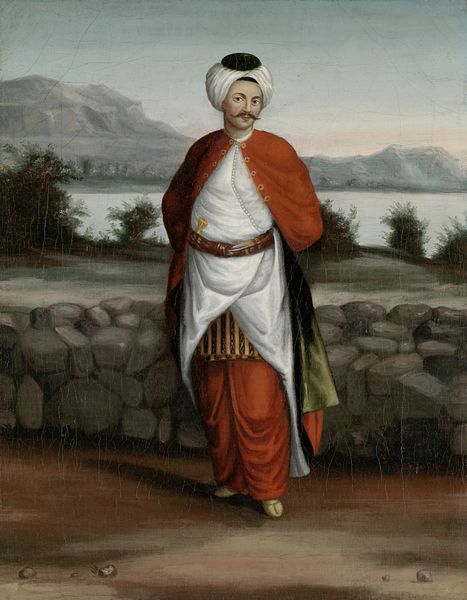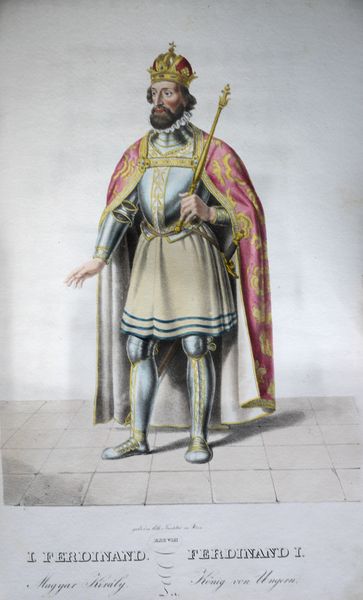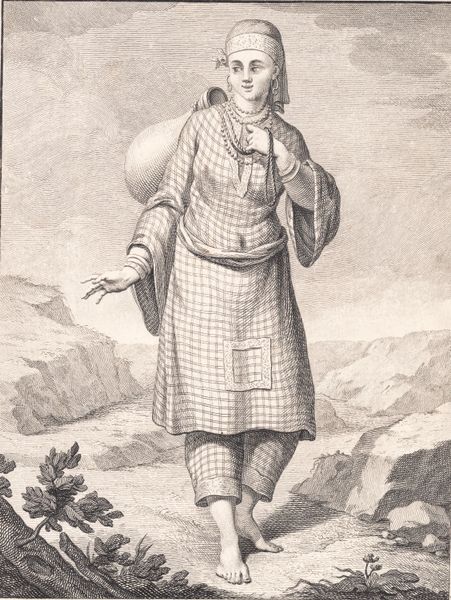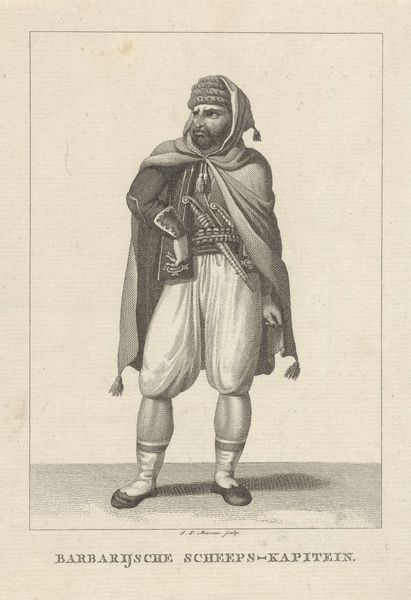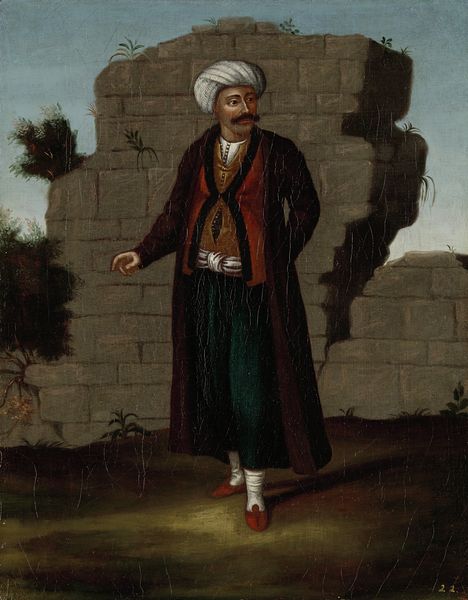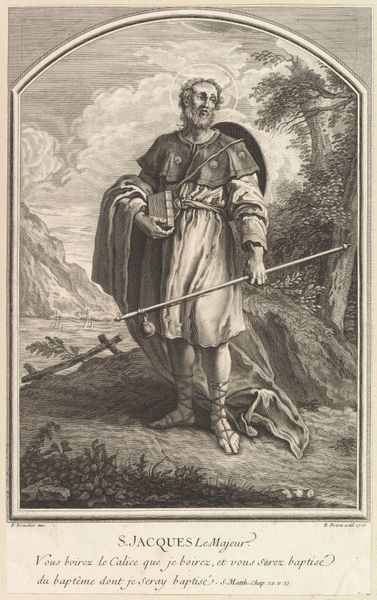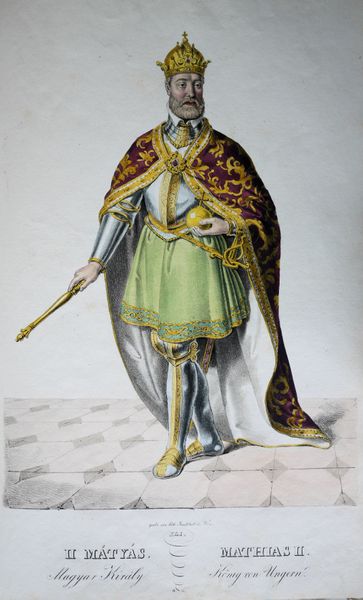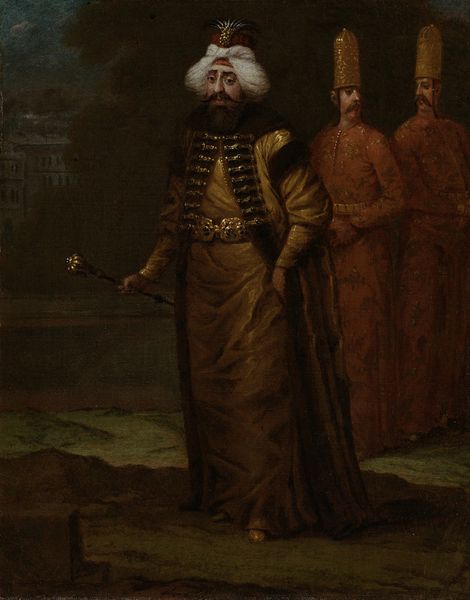
painting, oil-paint
#
portrait
#
baroque
#
painting
#
oil-paint
#
oil painting
#
islamic-art
#
genre-painting
Dimensions: height 39.5 cm, width 31 cm
Copyright: Rijks Museum: Open Domain
Curator: Before us we have Jean Baptiste Vanmour’s "A Soldier of the Janissaries", an oil painting thought to have been completed sometime between 1700 and 1737. Editor: My first impression? A figure seemingly caught between worlds, standing rather proudly amidst what feels like a theatrical landscape. Curator: Indeed. Vanmour, as a painter in the Ottoman court, captured the intricacies of Janissary attire, revealing symbols of their power and status. Observe the elaborate turban, for example, and the fine details of the weaponry, both speaking to the identity of these elite soldiers. It tells of an established order. Editor: And yet, let's consider the historical backdrop. The Janissaries, originally slaves and converts, held immense power, often acting as kingmakers, influencing politics, even destabilizing the very empire they were sworn to protect. Is the painting glorifying this figure, or subtly hinting at the tensions beneath the surface? Curator: Perhaps both. The painting does function as a record of a cultural moment, a Western painter portraying a pivotal element of Ottoman society. Note how the composition leads the eye towards the subject’s face. What emotions or character do you discern? Editor: He exudes a certain self-assuredness, perhaps even a hint of arrogance. His gaze is direct but tells little, leaving room for interpretation. One wonders about the stories, the lives, concealed behind that imposing facade. His hand gesture strikes me, inviting or dismissing? Curator: A good question. The gestures carry so much culturally understood meaning; Vanmour presents these as he encountered them, but his intended understanding isn’t easily reconstructed. It prompts us to question what is seen and unseen, then and now. Editor: Absolutely, it invites conversations about the representation of the Other, about orientalism and power dynamics, raising valid discussions. What did this portrait serve at the time, and how does its significance shift when seen today? Curator: It's an intricate reflection, prompting me to reconsider my interpretation of symbols of power, the individual, and societal currents frozen in a moment in time. Editor: This piece leaves one with a haunting sense of how history is framed and the myriad of readings it can trigger, and ultimately questions the gaze of both artist and beholder.
Comments
No comments
Be the first to comment and join the conversation on the ultimate creative platform.
